A Novel MEMS Gyro North Finder Design Based on the Rotation Modulation Technique
Abstract
:1. Introduction
2. Principle and Theoretical Model
2.1. Rotation Modulation Principle
2.2. Static North Finding Model
2.3. Dynamic North Finding Model
3. Design and Implementation
3.1. Inertial Sensor Performance
3.2. Hardware Design
3.3. Electronics Design
3.4. PMSM Vector Control
3.5. Experiment Setup
4. Experimental Results and Error Analysis
4.1. Static North Finding
4.2. Dynamic North Finding
4.3. Error Analysis and Compensation
4.3.1. Prototype Attitude Angle Error
4.3.2. Gyro Temperature Drift Error
4.3.3. Gyro g-Sensitivity Error
4.3.4. Motor Speed Fluctuation Error
4.4. Results Discussion
5. Conclusions
Acknowledgments
Author Contributions
Conflicts of Interest
References
- Ilyas, M.; Cho, K.; Baeg, S.; Park, S. Drift Reduction in Pedestrian Navigation System by Exploiting Motion Constraints and Magnetic Field. Sensors 2016, 16, 1455. [Google Scholar] [CrossRef] [PubMed]
- Wang, X.; Wu, M.; Feng, J. Research of algorithms for fast solving integer ambiguity and dual-GPS heading system. In Proceedings of the International Workshop on Education Technology and Training & 2008 International Workshop on Geoscience and Remote Sensing, Shanghai, China, 21–22 December 2016; pp. 215–218. [Google Scholar]
- Dmitry, Z.; Alexander, A.; Vladimir, K. Angular MET sensor for precise azimuth determination. In Proceedings of the SPIE International Conference on Micro- and Nano-Electronics 2016, Zvenigorod, Russia, 2–7 October 2016; Volume 10224. [Google Scholar]
- Huang, H.; Agafonov, V.; Yu, H. Molecular Electric Transducers as Motion Sensors: A Review. Sensors 2013, 13, 4581–4597. [Google Scholar] [CrossRef] [PubMed]
- Yu, H.; Zhu, H.; Gao, D.; Yu, M.; Wu, W. A Stationary North-Finding Scheme for an Azimuth Rotational IMU Utilizing a Linear State Equality Constraint. Sensors 2015, 15, 4368–4387. [Google Scholar] [CrossRef] [PubMed]
- Wang, B.; Zhang, W.; Wang, Z.; Zhu, P. Lock-in amplifier technology in laser gyroscope north finder of constant rate biasing. Math. Probl. Eng. 2013, 2013, 856803–856811. [Google Scholar] [CrossRef]
- Bojja, J.; Collin, J.; Kirkko-Jaakkola, M.; Payne, M.; Griffiths, R.; Takala, J. Compact North Finding System. IEEE Sens. J. 2016, 16, 2554–2563. [Google Scholar] [CrossRef]
- Li, H.-J.; Xu, H.-G.; Pei, Y.; Guo, Y.; Sun, W. A Method for Revolution-Modulation North Seeker Based on Single Gyroscope and Accelerometer. Navig. Position. Timing 2016, 5, 41–45. (In Chinese) [Google Scholar]
- Luo, J.; Wang, Z.; Shen, C.; Kuijper, A.; Wen, Z.; Liu, S. Modeling and Implementation of Multi-Position Non-Continuous Rotation Gyroscope North Finder. Sensors 2016, 16, 1513. [Google Scholar] [CrossRef] [PubMed]
- Li, Y.; Wu, W.; Jiang, Q.; Wang, J. A New Continuous Rotation IMU Alignment Algorithm Based on Stochastic Modeling for Cost Effective North-Finding Applications. Sensors 2016, 16, 2113. [Google Scholar] [CrossRef] [PubMed]
- Beitia, J.; Fell, C.; Okon, I.; Sweeney, P. Low Cost CVG for High-grade North Finders and Targeting Systems. In Proceedings of the 2014 DGON Inertial Sensors and Systems Symposium (ISS), Karlsruhe, Germany, 16–17 September 2014. [Google Scholar]
- Xu, J.; Xie, L.; Gao, Y.; Chen, J. Study of Filter Used in Revolution-Modulation North-Finder. J. Beijing Inst. Technol. 2005, 25, 718–721. [Google Scholar]
- Prikhodko, I.P.; Zotov, S.A.; Trusov, A.A.; Shkel, A.M. What is MEMS Gyrocompassing? Comparative Analysis of Maytagging and Carouseling. J. Microelectromech. Syst. 2013, 22, 1257–1266. [Google Scholar] [CrossRef]
- Wang, X.; Wu, J.; Xu, T.; Wang, W. Analysis and Verification of Rotation Modulation Effects on Inertial Navigation System based on MEMS Sensors. J. Navig. 2013, 66, 751–772. [Google Scholar] [CrossRef]
- Bias, J.; Mathur, N.; Thorpe, T. Advances in lightweight precision north finding and positioning systems. In Proceedings of the 2016 DGON Inertial Sensors and Systems (ISS), Karlsruhe, Germany, 20–21 September 2016; pp. 1–10. [Google Scholar]
- Collin, J.; Kirkko-Jaakkola, M.; Takala, J. Effect of Carouseling on Angular Rate Sensor Error Processes. IEEE Trans. Instrum. Meas. 2015, 64, 230–240. [Google Scholar] [CrossRef]
- Iozan, L.I.; Kirkko-Jaakkola, M.; Collin, J.; Takala, J.; Rusu, C. Using a MEMS gyroscope to measure the Earth’s rotation for gyrocompassing applications. Meas. Sci. Technol. 2012, 23, 025005. [Google Scholar] [CrossRef]
- Zhang, Y.; Zhang, R.; Zhou, B.; Zhang, X.; Song, M.; Mi, L. Detection methods of earth’s rotation rate with a MEMS gyroscope. In Proceedings of the 2015 IEEE International Conference on Electronic Measurement & Instruments (ICEMI), Qingdao, China, 16–18 July 2015; pp. 1552–1557. [Google Scholar]
- Prikhodko, I.P.; Trusov, A.A.; Shkel, A.M. North-finding with 0.004 radian precision using a silicon MEMS quadruple mass gyroscope with Q-Factor of 1 million. In Proceedings of the IEEE Micro Electro Mechanical Systems, Paris, France, 29 January–2 February 2012. [Google Scholar]
- Johnson, B.R.; Cabuz, E.; French, H.B.; Supino, R. Development of a MEMS gyroscope for northfinding applications. In Proceedings of the IEEE-ION Position Location and Navigation Symposium, Indian Wells, CA, USA, 4–6 May 2010; pp. 48–50. [Google Scholar]
- Johnson, B.; Christ, K.; Endean, D.; Mohr, B.; Supino, R.; French, H.; Cabuz, E. Tuning fork MEMS gyroscope for precision northfinding. In Proceedings of the 2015 DGON Inertial Sensors and Systems Symposium (ISS), Karlsruhe, Germany, 22–23 September 2015. [Google Scholar]
- Liu, H.; Yao, Y.; Lu, D.; Ma, J. Study for outliers based on Kalman filtering. Electr. Mach. Control 2003, 7, 40–42. [Google Scholar]
- Gong, X.; Li, Z. A Robust Weighted Total Least Squares Method. Acta Geod. Cartogr. Sin. 2014, 43, 888–894. [Google Scholar]
- Kang, L.; Ye, L.; Song, K.; Zhou, Y. Attitude Heading Reference System Using MEMS Inertial Sensors with Dual-Axis Rotation. Sensors 2014, 14, 18075–18095. [Google Scholar] [CrossRef] [PubMed]
- Du, S.; Sun, W.; Gao, Y. An Investigation on MEMS IMU Error Mitigation Using Rotation Modulation Technique. In Proceedings of the 27th International Technical Meeting of the Satellite Division of the Institute of Navigation (ION GNSS 2014), Tampa, FL, USA, 8–12 September 2014; pp. 1822–1838. [Google Scholar]
- Ji, Z.; Ren, J.; Zheng, X.; Wang, W.; Yu, K. SINS in-flight correction algorithm based on residual chi-square test with a safe window. J. Chin. Inert. Technol. 2008, 16, 419–423. [Google Scholar]
- Sui, J.; Wang, L.; Wang, W.; Song, T. Improvement on the Pitch and Roll Output of Rotation Inertial Navigation System. IEEE Sens. J. 2017, PP. [Google Scholar] [CrossRef]
- Pizzarulli, A.; Senatore, R.; Quatraro, E.; Perlmutter, M. Selecting the Optimum Inertial Sensor for Each Specific Application—A Comprehensive Guide Based on Analytic Criteria and Experimental Data across Several Sensors and Technologies. In Proceedings of the IEEE-ION Position Location and Navigation Symposium, Savannah, GA, USA, 11–14 April 2014; pp. 519–523. [Google Scholar]
- Xu, H.; Guo, Z. Research on Rotating FOG North-Finder. Piezoelectr. Acoustoopt. 2010, 32, 38–41. [Google Scholar]
- Zhang, T.; Zhou, B.; Yin, P.; Chen, Z.; Zhang, R. Optimal Design of a Center Support Quadruple Mass Gyroscope (CSQMG). Sensors 2016, 16, 613. [Google Scholar] [CrossRef] [PubMed]
- Zhang, Y.; Lin, Z.; Zhang, X.; Zhou, B.; Zhang, R. A man-portable MEMS rotation modulation platform using the permanent magnet synchronous motor vector control algorithm. In Proceedings of the International Conference on Instrumentation Measurement Computer Communication and Control, Haerbin, China, 21–13 July 2016; pp. 411–415. [Google Scholar]
- Witt, T.J. Using the Allan variance and power spectral density to characterize DC nanovoltmeters. IEEE Trans. Instrum. Meas. 2001, 50, 445–448. [Google Scholar] [CrossRef]
- Prikhodko, I.P.; Trusov, A.A.; Shkel, A.M. Compensation of drifts in high-Q MEMS gyroscopes using temperature self-sensing. Sens. Actuators A Phys. 2013, 201, 517–524. [Google Scholar] [CrossRef]
- Bancroft, J.B.; Lachapelle, G. Estimating MEMS gyroscope G-sensitivity errors in foot mounted navigation. In Proceedings of the 2012 Ubiquitous Positioning, Indoor Navigation, and Location Based Service (UPINLBS), Helsinki, Finland, 3–4 October 2012. [Google Scholar]


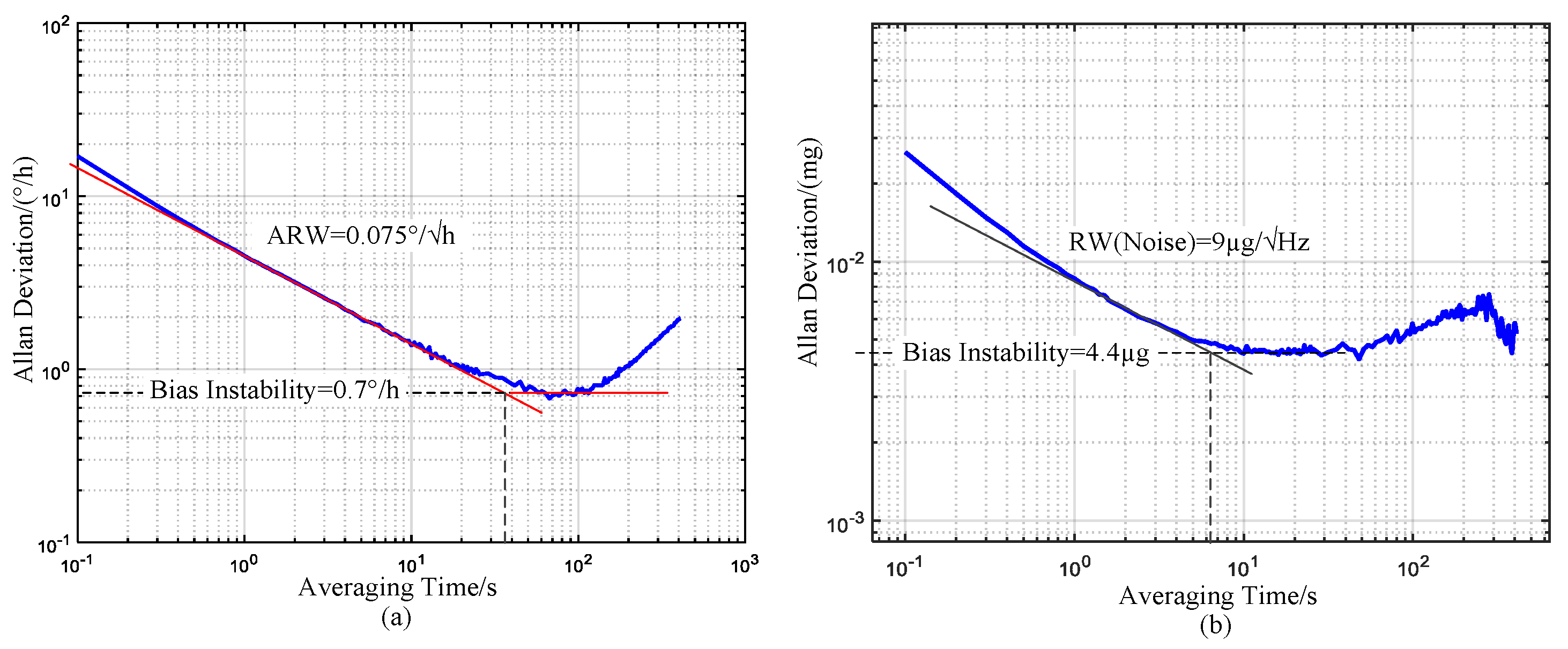
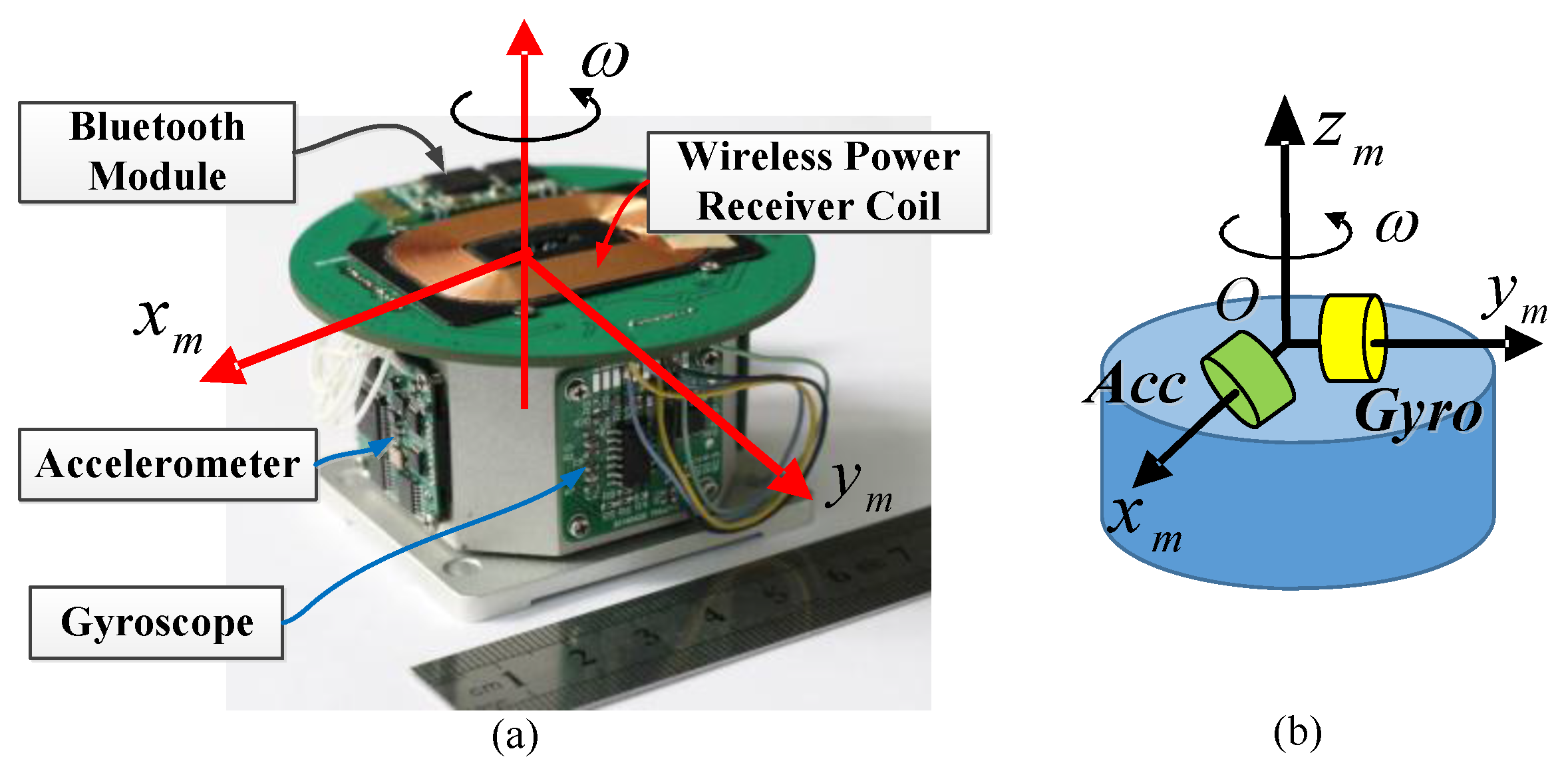
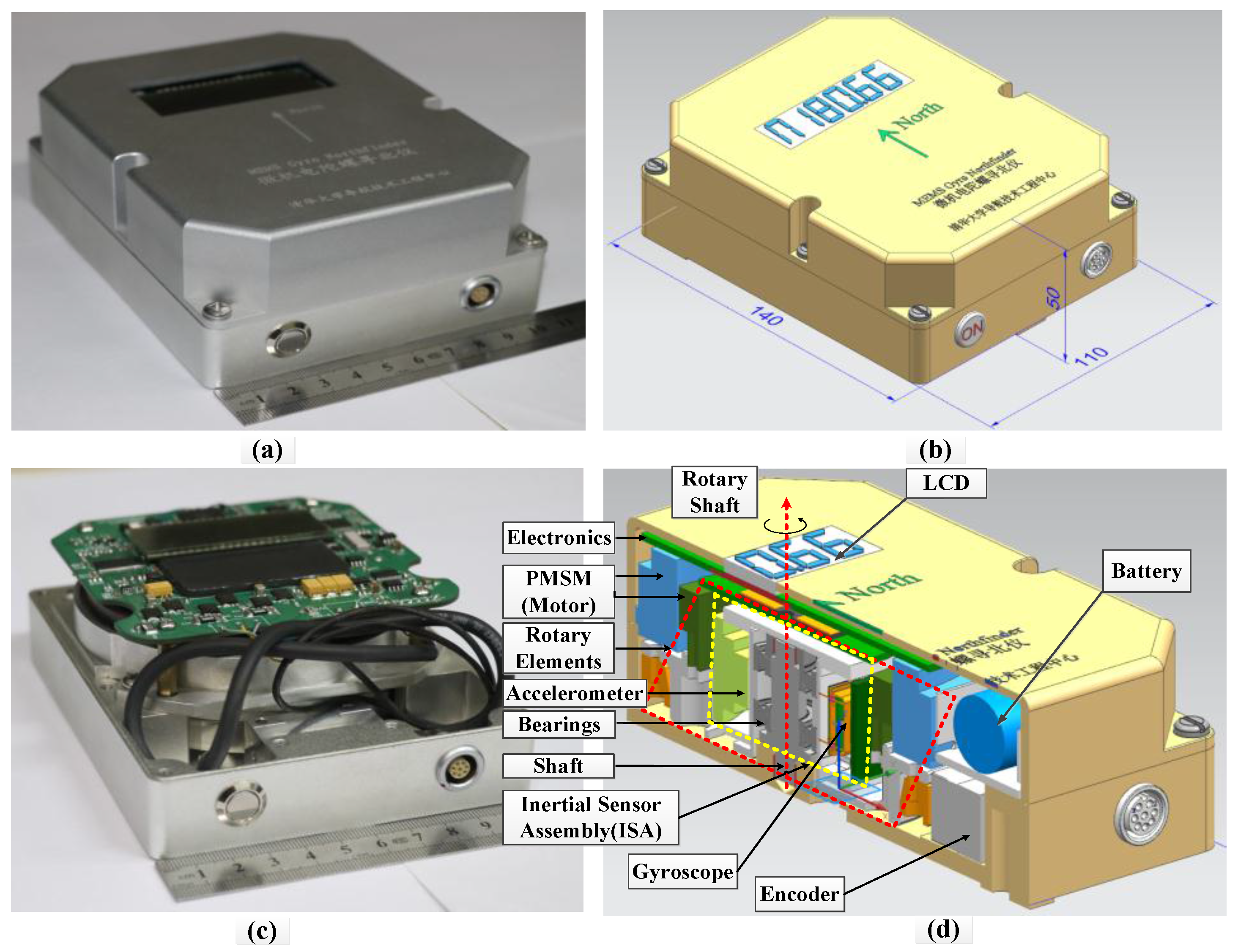
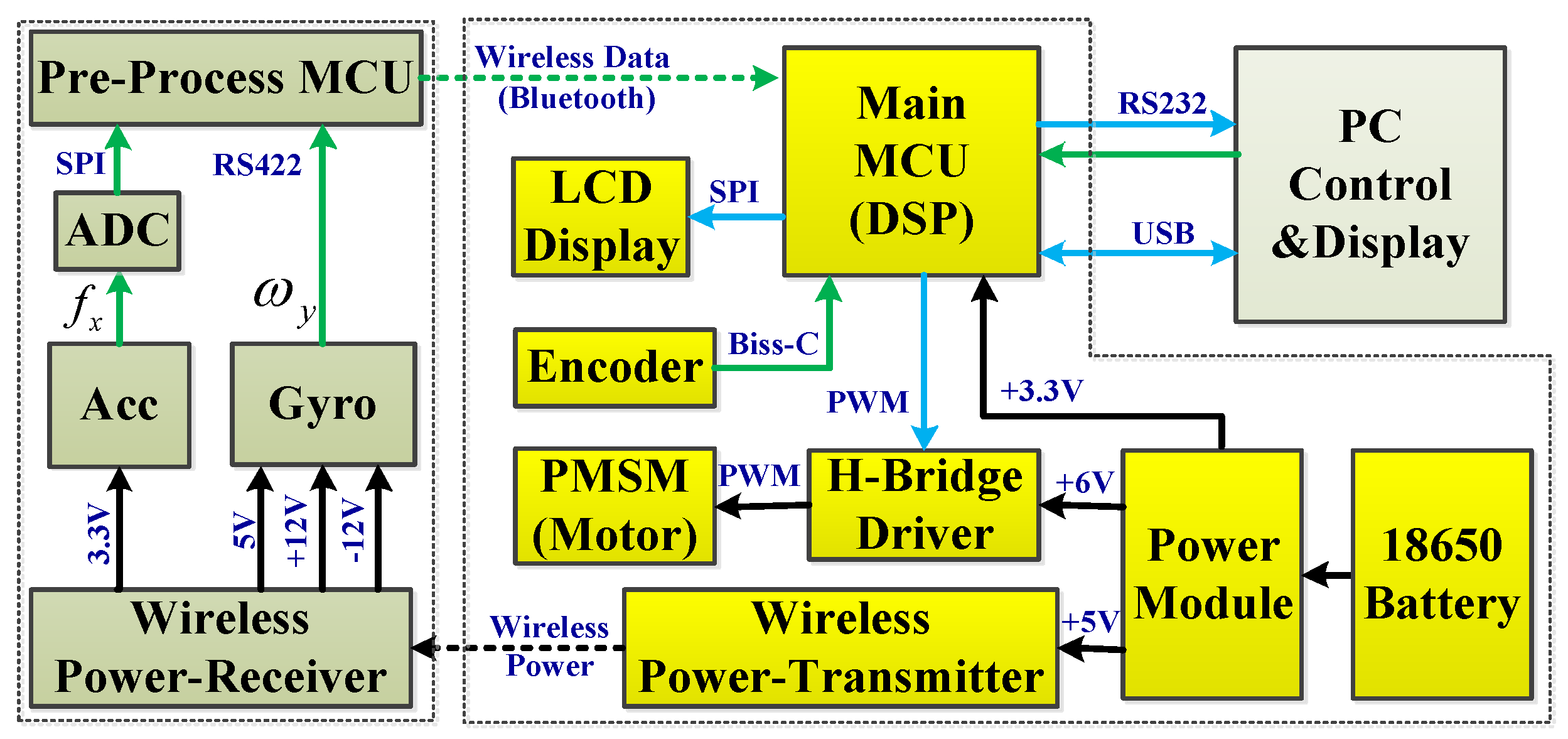

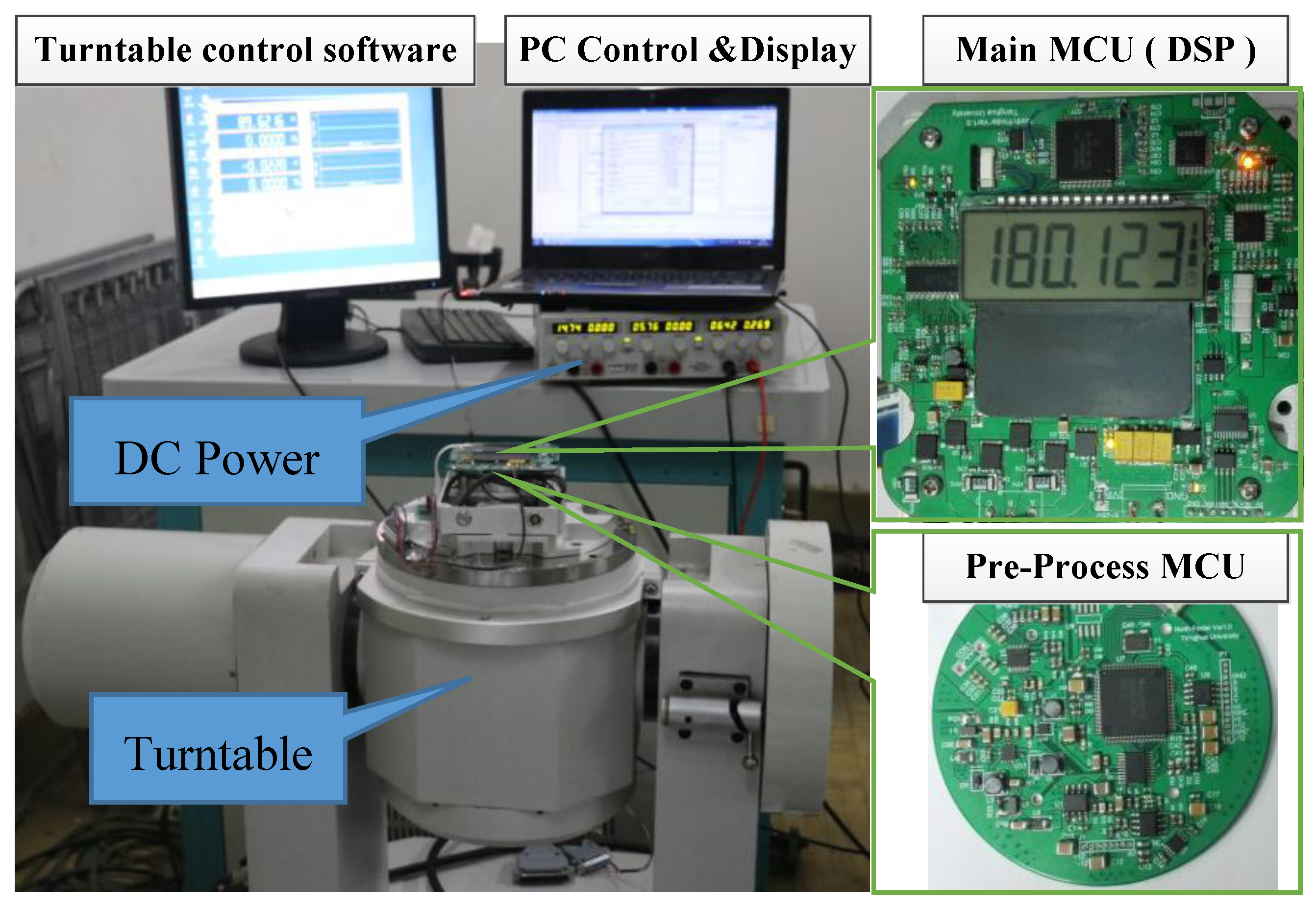


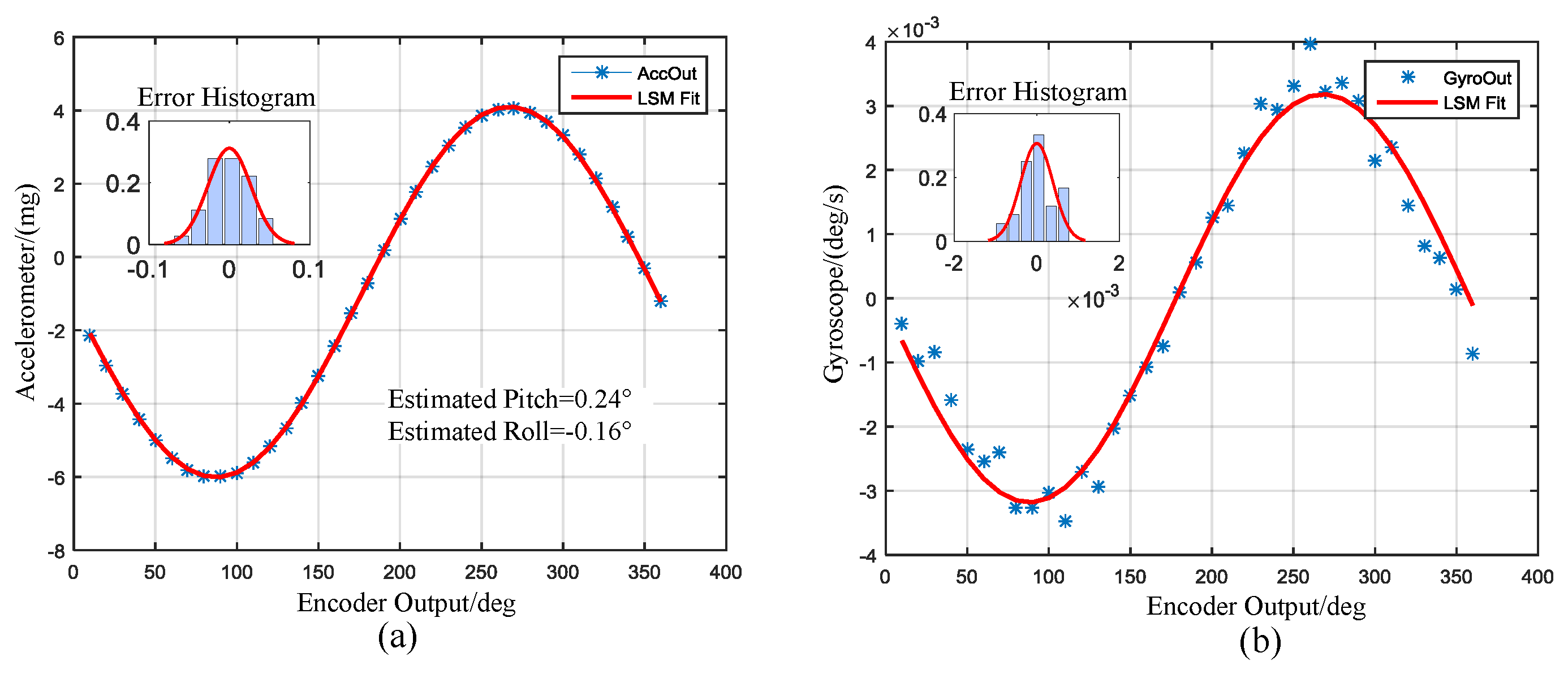


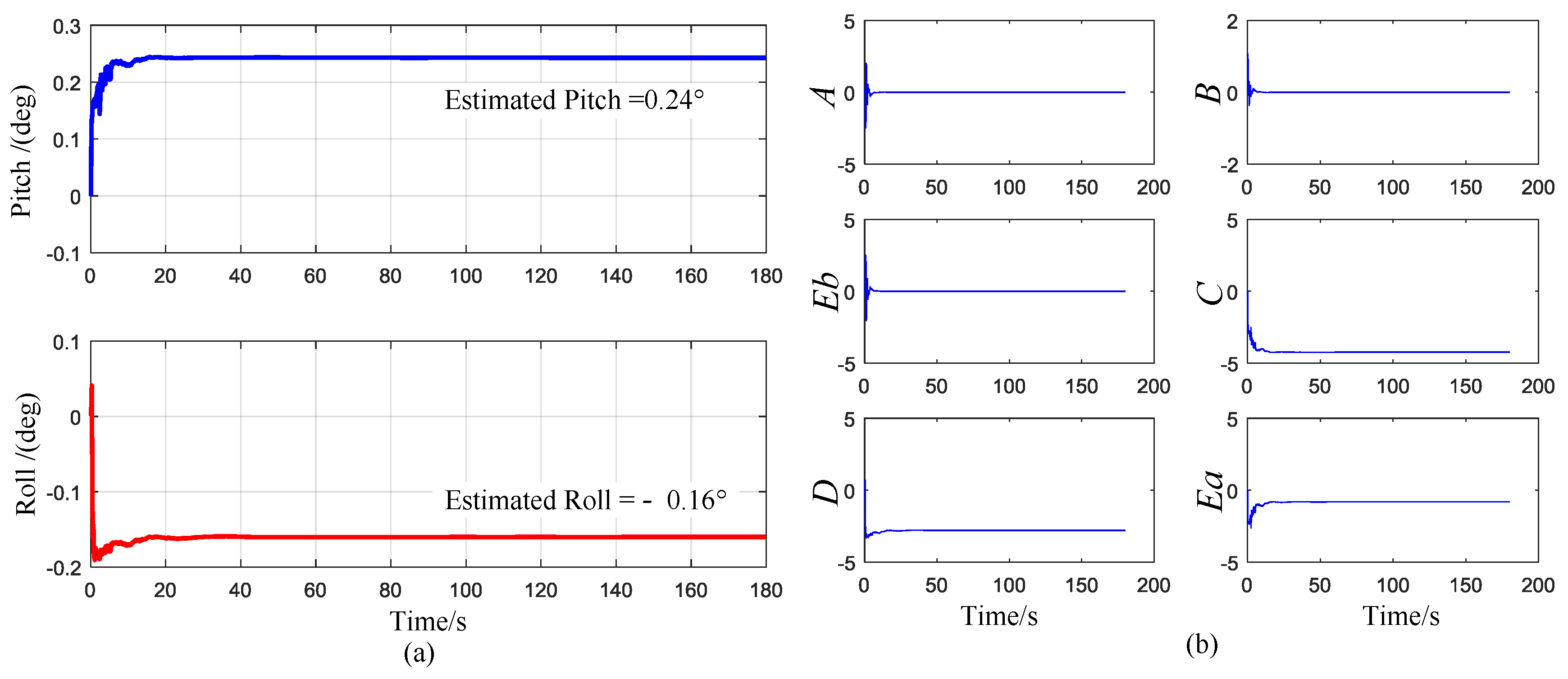
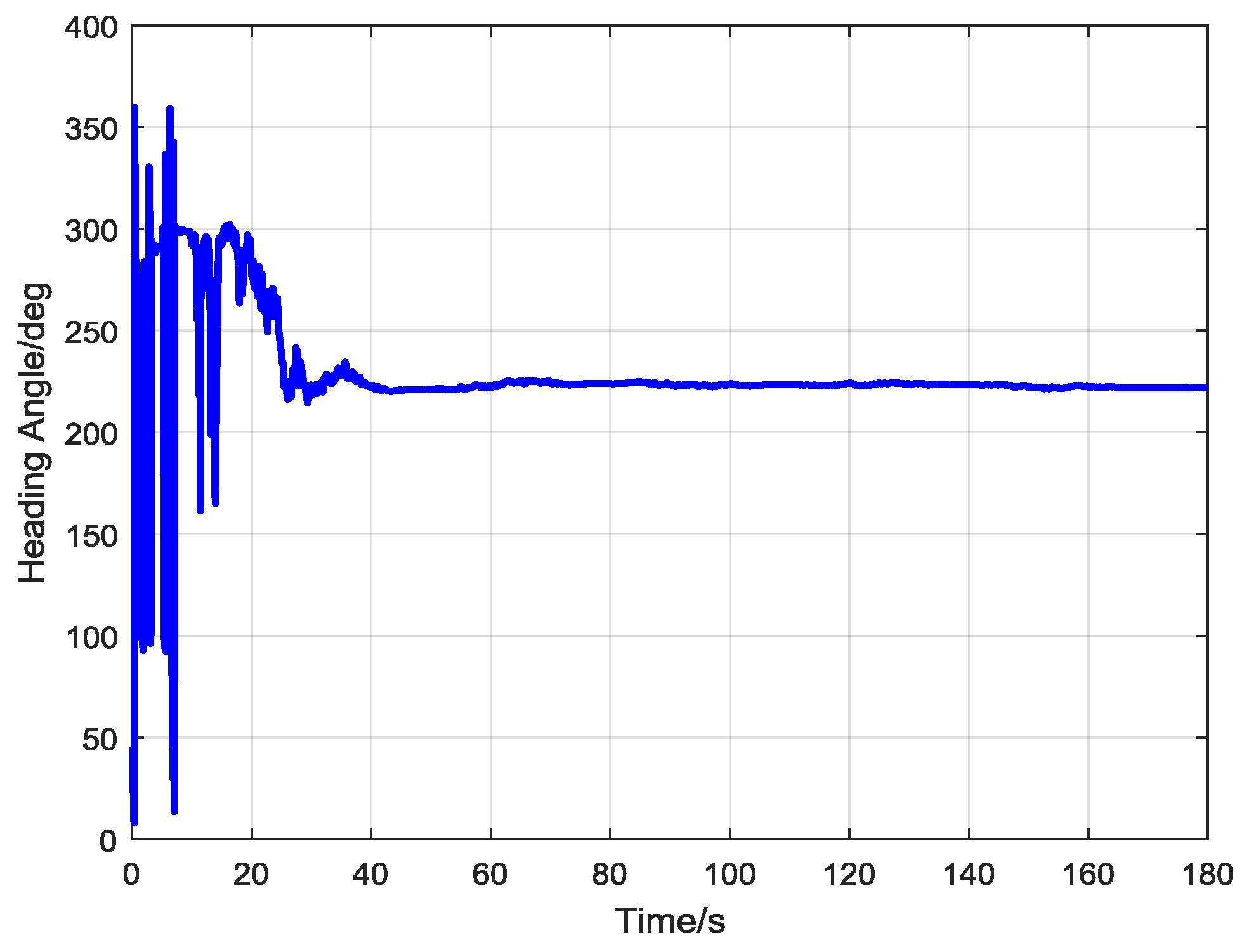
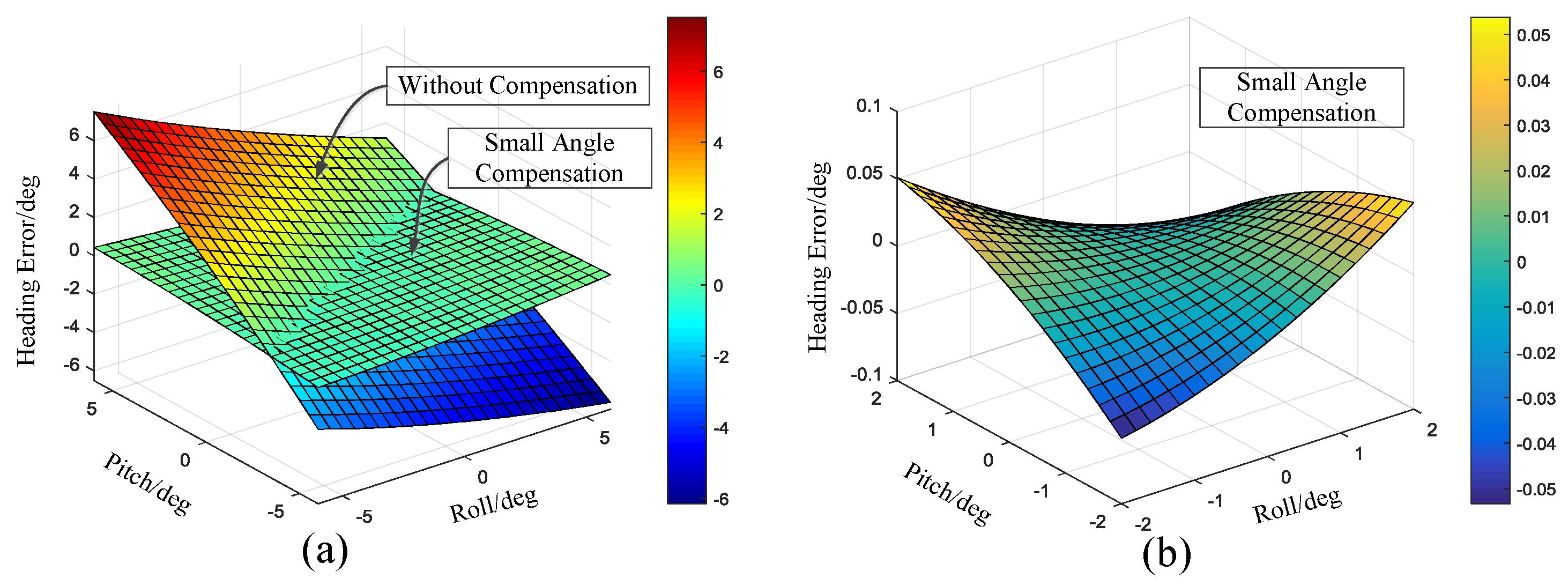
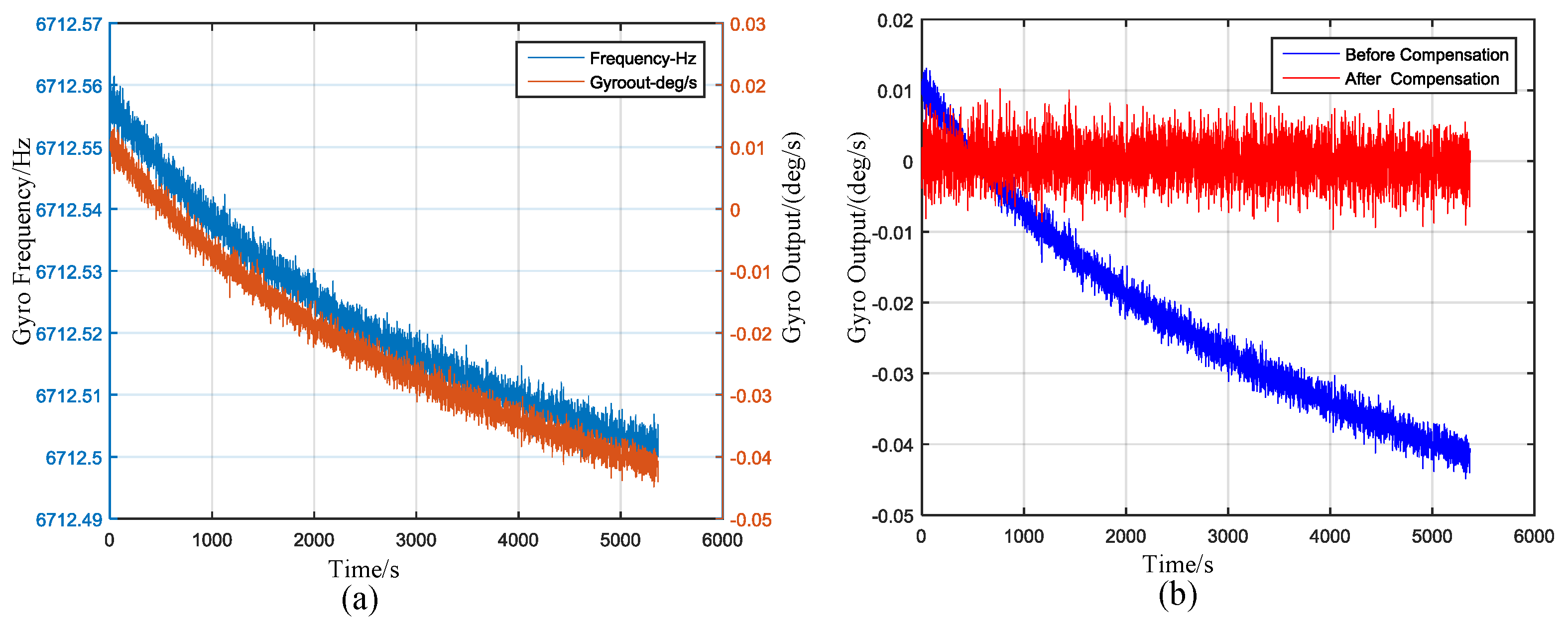
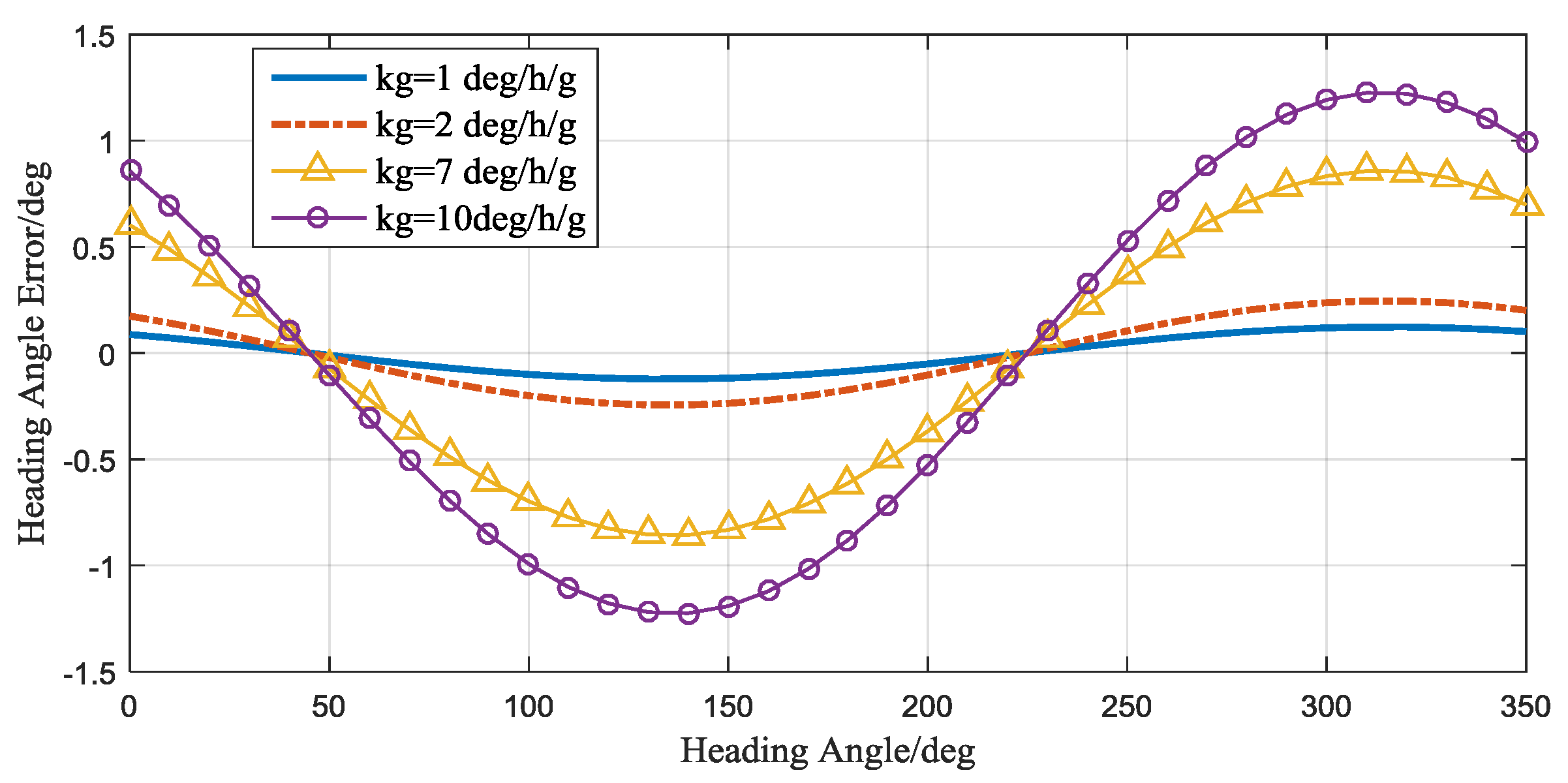
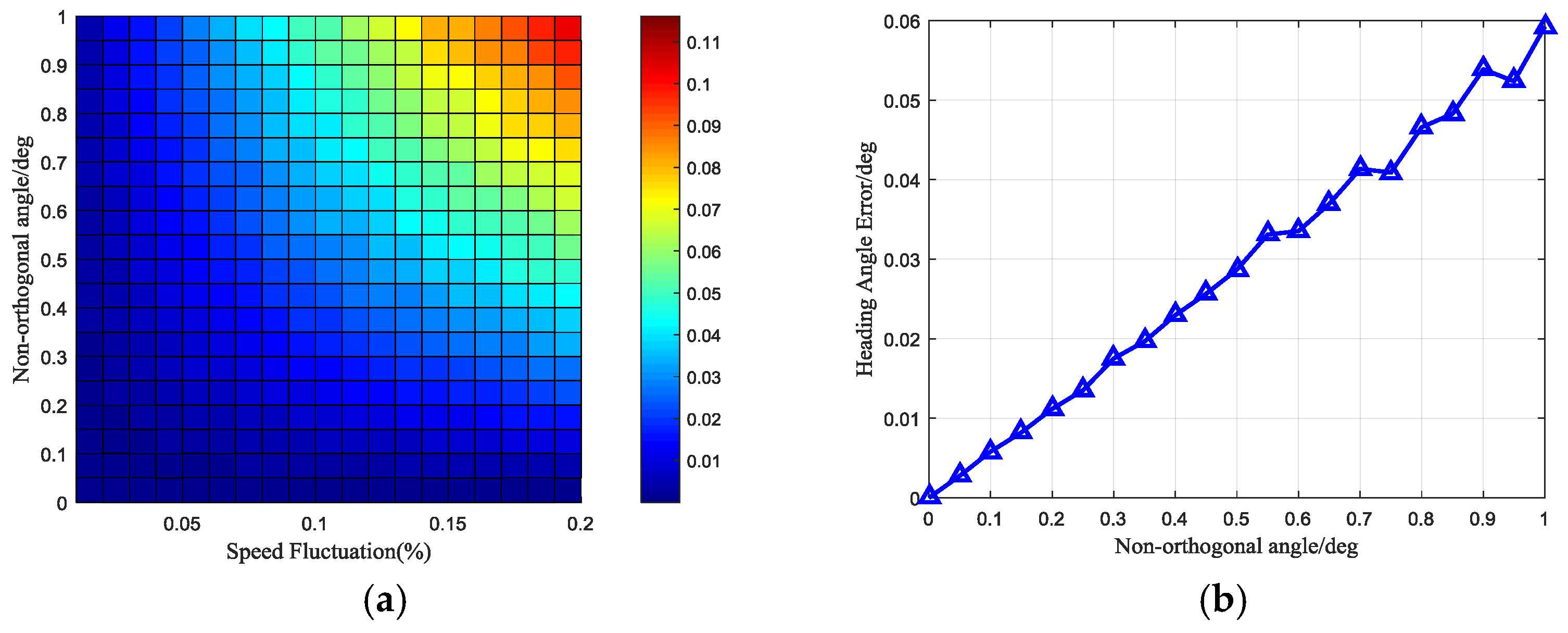
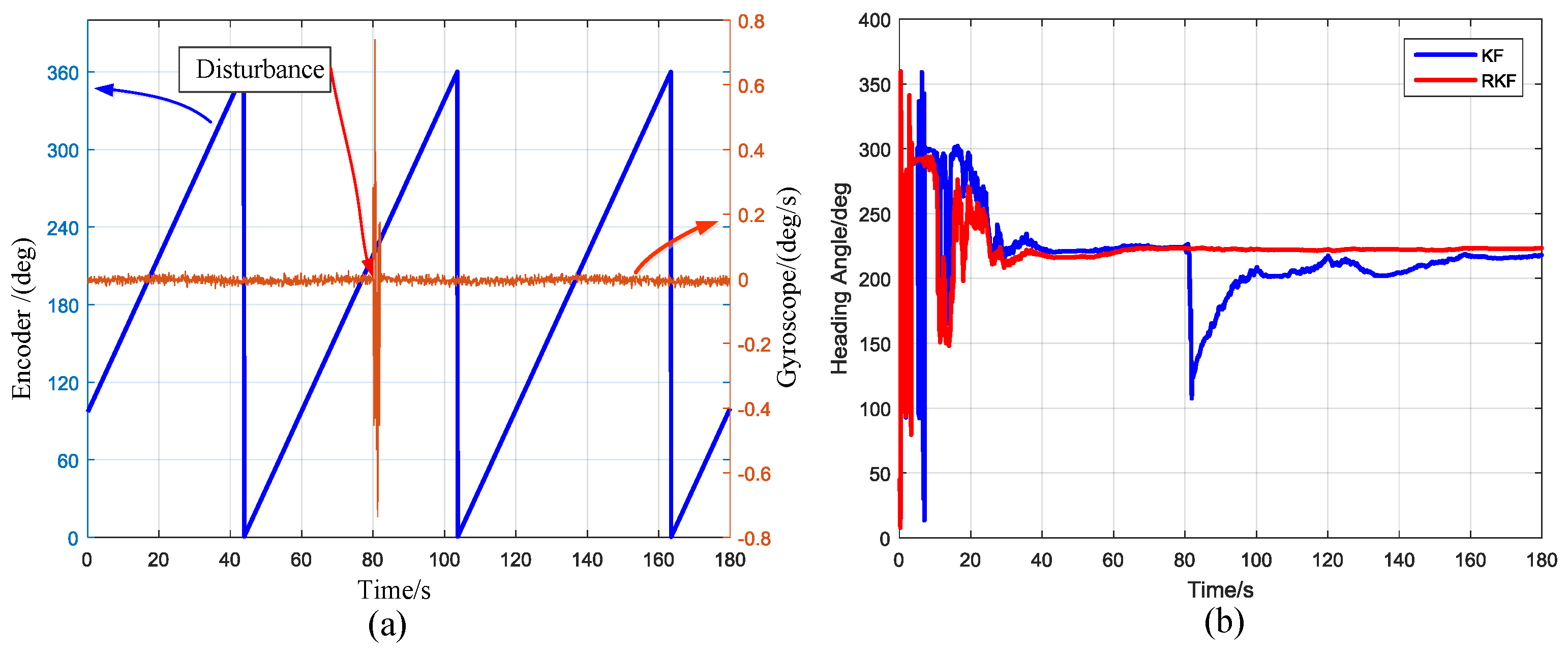
| Run | 1 | 2 | 3 | 4 | 5 | 6 | 7 | Std |
|---|---|---|---|---|---|---|---|---|
| Results | 222.52° | 220.95° | 222.18° | 223.34° | 222.92° | 222.94° | 220.61° | 1.05° |
| Error | 0.31° | −1.26° | −0.03° | 1.13° | 0.71° | 0.73° | −1.60° |
| Name | Gyromat 3000 | HG 2172 | Octans 3000 | SIGMA 20M | This Paper |
|---|---|---|---|---|---|
| Producer | DMT GmbH | Honeywell | iXBlue | SAFRAN | This Paper |
| Gyros | Mechanical | RLG | FOG | HRG | MEMS |
| Time | 10 min | 4 min | 5 min | 6 min | 3 min |
| Precision | 3.24″ | 0.05° | 0.1° | 0.1° | 1° |
| Size/mm | Φ215 × H330 | 163 × 165 × 163 | Φ213 × H375 | 208 × 136 × 292 | 110 × 140 × 50 |
| Weight | 11.5 kg | 4.1 kg | 15 kg | 4.5 kg | 1.5 kg |
| Power | Not Specified | 18 W | 20 W | 28 W | 3.6 W |
| Type | Product | Product | Product | Product | Prototype |
© 2017 by the authors. Licensee MDPI, Basel, Switzerland. This article is an open access article distributed under the terms and conditions of the Creative Commons Attribution (CC BY) license (http://creativecommons.org/licenses/by/4.0/).
Share and Cite
Zhang, Y.; Zhou, B.; Song, M.; Hou, B.; Xing, H.; Zhang, R. A Novel MEMS Gyro North Finder Design Based on the Rotation Modulation Technique. Sensors 2017, 17, 973. https://doi.org/10.3390/s17050973
Zhang Y, Zhou B, Song M, Hou B, Xing H, Zhang R. A Novel MEMS Gyro North Finder Design Based on the Rotation Modulation Technique. Sensors. 2017; 17(5):973. https://doi.org/10.3390/s17050973
Chicago/Turabian StyleZhang, Yongjian, Bin Zhou, Mingliang Song, Bo Hou, Haifeng Xing, and Rong Zhang. 2017. "A Novel MEMS Gyro North Finder Design Based on the Rotation Modulation Technique" Sensors 17, no. 5: 973. https://doi.org/10.3390/s17050973






